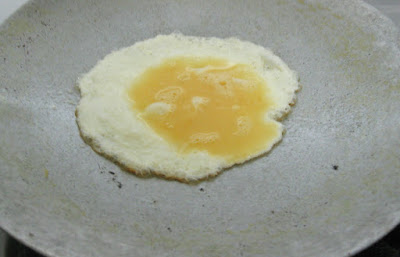Ingredients:
Potatoes--peeled and finely sliced.
Carrots--peeled, finely sliced.
Turnips--peeled or not, depending on the kind you have. Also sliced.
Whole coriander. Oh, all right, coriander powder will do.
Salt, sugar.
Eggs--hard boiled (optional)
This is weally weally easy. First, you slice/chop the vegetables quite thin, so they soften quicker in boiling water.
When a fork goes through the carrots easily, drain the excess water (retain a quarter cup of water in it to help make things smoother) and mash everything together well. Some people like to retain a few recognisable bits of vegetables for that sudden what's-this-in-my-mouth delight, but, meh. I'm pretty take it or leave it when it comes to mash consistency.
Now in a skillet/frying pan/wok, heat a little oil. Spread it around. Slowly ladle the mash. Sprinkle freshly-ground coriander, salt and a pinch of sugar and fold it in together over a low flame.
If using eggs, shell the hard-boiled eggs under a cold tap. Slice them into halves.
Now cake each half-egg in the flavoured vegetable mash. If not using eggs, simply shape a lump of mash into a tapering oval. This is what we call the chop.
Make a batter with one egg and a fourth cup of milk. After dipping each chop in the batter, roll then in bread crumbs. If one doesn't have bread crumbs handy, crush crackers OR crisply toast bread and crush them into a coarse powder. Vegetarians can skip the egg batter bit easily.
Traditionally, these are deep-fried and served with a tomato-cucumber-lemon juice salad. Some people even serve these with rice and mushur daal, with the salad on the side, for a light lunch. But these days, with a tiny toaster oven at home, I rub them with a little oil (sunflower oil, in my case) and bake them for 20-30 minutes, and broil/toast for a final few minutes for a crispy exterior.

















































